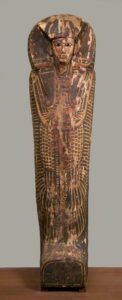
The world of art and antiquities has seen many dark days. However, few incidents compare to the role of one particular trafficker in pilfering Syria’s cultural heritage, only to receive a lenient federal prison sentence as justice. This incident highlights a significant ongoing issue – the excessive leniency often shown by federal courts towards individuals who engage in illicit dealings of looted artefacts.
The Case of the Syrian Mosaic Loot
Like the veil-trimmed ruins of ancient Palmyra, an exquisite Syrian mosaic sail unchallenged into the murky world of black-market art trafficking. The mosaic – a medley of Collyridan priestesses basking under a radiant sun – was furtively sheared from its stately home in Syria.
Its removal would not have been possible without the connivance of an art trafficker. A conniving figure who saw opportunity in conflict, culture in chaos. He paved the way for the mosaic’s passage from historic Syrian edifice to criminal profiteer’s portfolio.
Courtroom Drama
In a federal courtroom, this exploitation of Syrian cultural heritage finally met the hand of justice. Yet, the outcome was far from the hardline stance many anticipated; the lenient federal prison sentence was a far cry from the severity of the crime committed.
In the eyes of many experts, such leniency offers a green light for traffickers. It silently whispers a promise of leniency for crimes that pillage our collective human history.
The Wider Implication
The looting and selling of Syrian antiquities is not an isolated incident. It forms part of a much larger, much darker issue – the illicit trade of art and antiquities. This is a trade that stretches its poisoned roots deep into the heart of charged regions; regions torn apart by conflict, beset by cultural plunderers.
Cases like the Syrian mosaic, when seen in the cold light of the lenient federal prison sentence handed out to its trafficker, drive a stark reality home. The current sanctions for such violations are far from enough to deter potential offenders. This case, in particular, has set a dangerous precedent in a world desperately trying to hold onto its history and cultural beauty.
Though the art trafficker in this case now resides behind bars, his lenient sentence speaks volumes about the need for greater deterrents to prevent future desecrations of our shared cultural heritage. Otherwise, we may lose more precious artefacts to the shadows of illicit art trafficking than we can ever recover.
Conclusion
This unique, yet troubling, case of the lenient sentence for the trafficker involved in the Syrian Mosaic loot serves a potent reminder: the stakes are high. As such, the onus is on us, the custodians of our global cultural heritage, to push harder for stern repercussions in the face of such unequivocal cultural transgressions.
A commitment to thorough investigation, comprehensive legal action and, most importantly, weighty penalties for such crimes are critical to preserving the integrity of our global cultural heritage.





